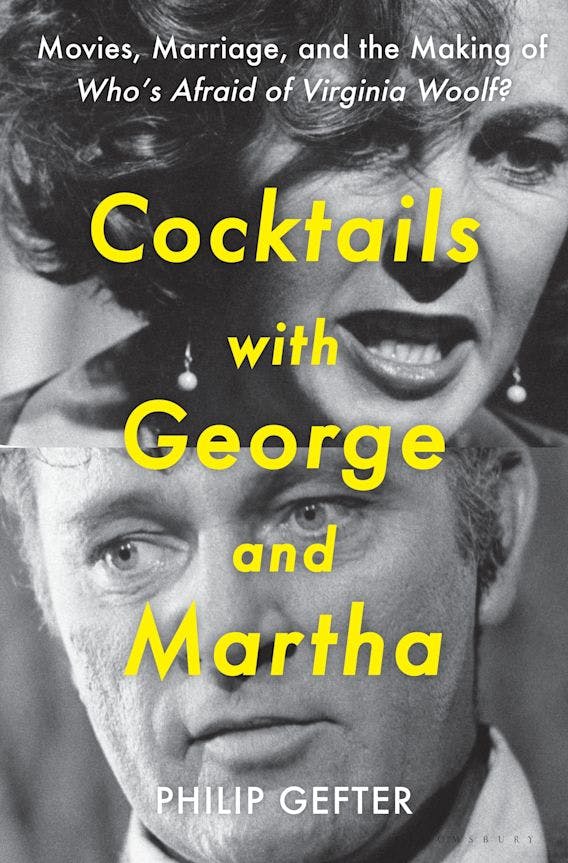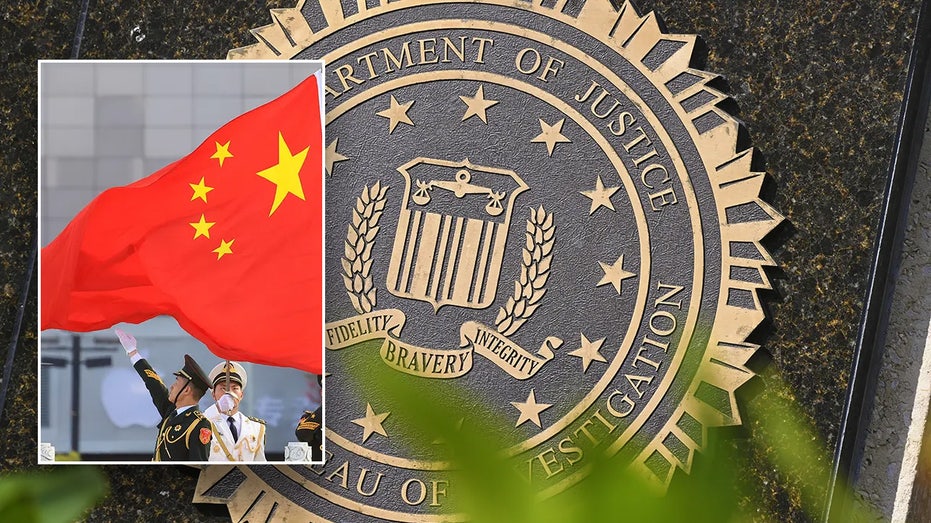The Drama of Who’s Afraid of Virginia Woolf? Spilled Into Real Life
Many of us who grew up in America’s middle-class suburbs of the 1950s and ’60s rarely experienced the ideal families encountered on television sitcoms—the Cleavers, Petries, and Father Knows Bests who just didn’t suffer serious emotional conflicts beyond minor disagreements about redecorating the den or locating a misplaced homework assignment. Where were all those wise and always-patient dads who hung around the living room with a tidily unfolded newspaper? Or the mothers who wore pearls in the kitchen while cooking meat loaf? Most chaotic homes, schools, and neighborhoods just didn’t match up with these well-regulated and geometrically laid-out open-plan kitchens and playgrounds.My younger brother and I first saw Who’s Afraid of Virginia Woolf? in the company of our fairly inebriated, Martha-like mother at the Serra Theater in Daly City, California, not long after my parents separated for the third and final time. I was 11 or so, and my brother three years younger; it was a theater where our mother often dragged us to see “grown-up” movies she didn’t want to see on her own, and while it was a perplexing movie (to say the least), it certainly made a lot more sense than other movies she dragged us to during those years. (I’m still not sure what actually happened in Antonioni’s Blow-Up.) And later, it was one of the few “grown-up” books I actually took down from the shelves of my parents and read for myself. For while the references to people like Bette Davis or even Virginia Woolf didn’t mean anything to us, the intense, psychodrama-laden scenes did. It opened the window on lives I recognized, however dimly. And the parade of emotions—rage, tenderness, passion, vengefulness, and jealousy—were a lot more interesting than the superficially emotionless range of my own life, where nobody really hated anybody; they were only trying to do what “was right for the kids.” It may have been the first adult movie that made me realize that adults had no better idea how to live their lives than us kids. And that given half a chance, they could loudly articulate their dissatisfaction to anybody who would stick around long enough to listen.As Philip Gefter writes in the introduction to Cocktails with George and Martha, Edward Albee’s most notorious play didn’t simply affect theater and moviegoers as a night’s entertainment; it barged into their lives and made a home of them. And the relationships it forged with audiences would last decades. It acted as both shock and revelation. It embraced both love and hate at significant volumes. It featured glamorous actors playing unglamorous parts, and its humor was often indistinguishable from its emotional horrors, and vice versa. It was a “big,” expensive movie set in a shabby on-campus faculty home, in a low-budget roadhouse, and on a leaf-strewn country road late at night. And the characters didn’t achieve great things or suffer great losses. They simply endured one another and, to an equally large extent, enjoyed one another. They were people without a mission living their lives without any purpose but each other.Like many of his generation, Gefter recalls his teenage experience of watching Woolf as a sort of open secret, and while he “couldn’t really make sense of it,” he “recognized his parents in it, as well as the parents of my friends.” It was like making contact with a “rumbling beneath the polite surface of those suburban marriages.” Unlike previous family dramas, these “rumblings” weren’t driven solely by alcohol (as in Eugene O’Neill) or the hard day’s work of men and women coming home every night to nothing (Arthur Miller and Clifford Odets). In Albee, these strong emotions and dissatisfactions emerged from the marrow of intelligent, passionate, sometimes monstrous (and very often hilarious) men and women.In Albee, strong emotions and dissatisfactions emerged from the marrow of intelligent, passionate, sometimes monstrous (and very often hilarious) men and women.Albee’s upbringing made him the perfect person to write about the deep pathological weirdness of American family relationships. Born in Washington, D.C., in 1928, Albee never knew the identity of his biological parents (“I’m sure my father wasn’t a president or anything like that”), and was adopted in infancy by a wealthy Wasp-ish couple who took him off to their “stately mansion” in Larchmont, New York, where he learned to make Old Fashioneds for his grandmother and to treat expensive leather-bound books as interior decor rather than, you know, things you actually read. Albee’s adopted parents raised him to be so thoroughly acceptable to their world that he soon felt unwelcome in his own body, the mother spouting “cracks” about ethnic minorities and homosexuals while the father slumped more and more deeply into a distant, angry complacency.Even the headmaster at a private school where Albee spent one of his truncated, Holden Caulfield–like tenures, sympathized with this “pathologically shy” (as Albee recalled

Many of us who grew up in America’s middle-class suburbs of the 1950s and ’60s rarely experienced the ideal families encountered on television sitcoms—the Cleavers, Petries, and Father Knows Bests who just didn’t suffer serious emotional conflicts beyond minor disagreements about redecorating the den or locating a misplaced homework assignment. Where were all those wise and always-patient dads who hung around the living room with a tidily unfolded newspaper? Or the mothers who wore pearls in the kitchen while cooking meat loaf? Most chaotic homes, schools, and neighborhoods just didn’t match up with these well-regulated and geometrically laid-out open-plan kitchens and playgrounds.
My younger brother and I first saw Who’s Afraid of Virginia Woolf? in the company of our fairly inebriated, Martha-like mother at the Serra Theater in Daly City, California, not long after my parents separated for the third and final time. I was 11 or so, and my brother three years younger; it was a theater where our mother often dragged us to see “grown-up” movies she didn’t want to see on her own, and while it was a perplexing movie (to say the least), it certainly made a lot more sense than other movies she dragged us to during those years. (I’m still not sure what actually happened in Antonioni’s Blow-Up.) And later, it was one of the few “grown-up” books I actually took down from the shelves of my parents and read for myself. 
For while the references to people like Bette Davis or even Virginia Woolf didn’t mean anything to us, the intense, psychodrama-laden scenes did. It opened the window on lives I recognized, however dimly. And the parade of emotions—rage, tenderness, passion, vengefulness, and jealousy—were a lot more interesting than the superficially emotionless range of my own life, where nobody really hated anybody; they were only trying to do what “was right for the kids.” It may have been the first adult movie that made me realize that adults had no better idea how to live their lives than us kids. And that given half a chance, they could loudly articulate their dissatisfaction to anybody who would stick around long enough to listen.
As Philip Gefter writes in the introduction to Cocktails with George and Martha, Edward Albee’s most notorious play didn’t simply affect theater and moviegoers as a night’s entertainment; it barged into their lives and made a home of them. And the relationships it forged with audiences would last decades. It acted as both shock and revelation. It embraced both love and hate at significant volumes. It featured glamorous actors playing unglamorous parts, and its humor was often indistinguishable from its emotional horrors, and vice versa. It was a “big,” expensive movie set in a shabby on-campus faculty home, in a low-budget roadhouse, and on a leaf-strewn country road late at night. And the characters didn’t achieve great things or suffer great losses. They simply endured one another and, to an equally large extent, enjoyed one another. They were people without a mission living their lives without any purpose but each other.
Like many of his generation, Gefter recalls his teenage experience of watching Woolf as a sort of open secret, and while he “couldn’t really make sense of it,” he “recognized his parents in it, as well as the parents of my friends.” It was like making contact with a “rumbling beneath the polite surface of those suburban marriages.” Unlike previous family dramas, these “rumblings” weren’t driven solely by alcohol (as in Eugene O’Neill) or the hard day’s work of men and women coming home every night to nothing (Arthur Miller and Clifford Odets). In Albee, these strong emotions and dissatisfactions emerged from the marrow of intelligent, passionate, sometimes monstrous (and very often hilarious) men and women.
Albee’s upbringing made him the perfect person to write about the deep pathological weirdness of American family relationships. Born in Washington, D.C., in 1928, Albee never knew the identity of his biological parents (“I’m sure my father wasn’t a president or anything like that”), and was adopted in infancy by a wealthy Wasp-ish couple who took him off to their “stately mansion” in Larchmont, New York, where he learned to make Old Fashioneds for his grandmother and to treat expensive leather-bound books as interior decor rather than, you know, things you actually read. Albee’s adopted parents raised him to be so thoroughly acceptable to their world that he soon felt unwelcome in his own body, the mother spouting “cracks” about ethnic minorities and homosexuals while the father slumped more and more deeply into a distant, angry complacency.
Even the headmaster at a private school where Albee spent one of his truncated, Holden Caulfield–like tenures, sympathized with this “pathologically shy” (as Albee recalled himself) boy more than with his awful parents: “Ed is an adopted child and, very confidentially, he dislikes his mother with a cordial and eloquent dislike which I consider entirely justified.… She is, in my opinion, a selfish, dominating person, whereas Ed is a sensitive, perceptive, and intelligent boy.” The parents continually denounced homosexuals throughout the years when Albee was beginning to understand himself as one. Everything about him seemed to disgust and offend them.
In possibly his funniest play, a 1961 one-act titled An American Dream, a template-like family of “Mommy,” “Daddy,” and “Grandma,” is so disturbed by the intractable unpleasantness of their adopted baby that they begin whittling off offensive parts until there’s nothing left. For Albee, the nuclear family was as rich with destructive potential as the nuclear bomb. This early play, Albee later wrote, served as “an attack on the substitution of artificial for real values in our society, a condemnation of complacency, cruelty, emasculation and vacuity; it is a stand against the fiction that everything in this slipping land of ours is peachy-keen.”
Like the horrible family in this early play, there would be nothing “artificial” or “peachy-keen” about George and Martha. They would be true to everything about themselves with all the passion, recriminations, and rage they could muster.
As a young man, Albee flew far and fast from the upper-crust home where he was raised, and soon found a new family (and perhaps a firmer, less perilous sense of identity) with the ’50s-era Greenwich Village art crowd, where being gay wasn’t considered an act of class treachery. His friends included Ned Rorem, Kenneth Koch, Frank O’Hara, Terence McNally, and Albee’s first long-term lover and roommate, composer and music critic William Flanagan. (Their often tempestuous relationship was later noted by friends as one of several inspirations for George and Martha.) But even while these new living arrangements liberated him from the world of his parents, it took several years to discover where he wanted to go creatively, and it wasn’t until Thornton Wilder suggested he try his hand at theater that Albee’s creative abilities took off.
With his first one-act play, The Zoo Story, he found his groove by depicting the randomly confrontational Jerry, who verbally assaults a total stranger on a park bench; Jerry was the first of Albee’s wild, unconventional characters who brought a lawless rage everywhere he went. Considered one of America’s first proponents of “absurd” theater (Albee learned his craft while attending performances of Beckett, Brecht, and Pirandello), his characters didn’t strive against the world’s absurdities but rather launched themselves absurdly against the dull, passive nature of suburban reality. The world wasn’t absurd enough, they seemed to argue. Americans needed to wake up to the fact that they weren’t any better than the animals they visited in zoos, and should probably be caged up themselves.
Zoo Story, initially performed in Berlin in 1959 and only appearing in New York many months later, staged one of Albee’s first dialogues-to-destruction between his principal characters. But as in everything he wrote, the dialogues were rendered in profound, emotive, beautifully written prose, almost musical in its rhythms, brooding resonances, and lyrical dislocations. As his friends Ned Rorem and Terence McNally pointed out, Albee wrote like a composer.
In retrospect, one of the most peculiar aspects of Albee’s early career was how shocking his work seemed to sensibilities at the time; it was as if Americans were asleep to their own contradictions until Albee transformed them into such stirring theater. Not only was his first full-length play, Who’s Afraid of Virginia Woolf?, greeted as profane and sui generis at its New York premier in October 1962, but it attracted two major theatrical stars of the time, Uta Hagen and Arthur Hiller; and even some of the major actors who turned down the leads weren’t happy about it. (Katherine Hepburn claimed she wasn’t a good enough actress to play Martha; and when Henry Fonda learned the part of George had been turned down by his agent, he fired his agent.)
On its premier, Woolf received the sort of strongly negative and strongly positive reviews that made it clear something important was happening—it’s just that nobody agreed on what that important thing was. It was both hailed and condemned as a “cause célèbre,” and eventually criticized for representing something referred to as “homosexual theater,” even while Albee was refusing offers to stage the play with men in all four parts. Then, after a sold-out first few months on Broadway, it was turned down for the Pulitzer when at least one judge confessed (somewhat proudly) that he hadn’t seen the play. He just didn’t like what he heard about it.
Among those to see the play’s first stage production was Ernest Lehman, the man who would go on to produce and write the screenplay for its film adaptation. Best known at the time for emotionally uncomplicated hits, such as Hitchcock’s North by Northwest or Robert Wise’s The Sound of Music, Lehman almost reluctantly attached himself to the project after being dragged by his wife to the L.A. production: “I was totally destroyed in that audience with people I knew seated all around me … trying to conceal sobs that were coming out of me.”
The play’s raucous, near-Bedlam intensities went on to infect its filming and production, where George and Martha’s dinner party “games” such as “Get the Guest” were soon transformed into their studio equivalents, such as “Get the Producer” or “Get the Director.” With such a varied assortment of talents, it’s surprising anything ever got done at all. First there was the young and weirdly successful Mike Nichols as director, already twice divorced at 33, suffering from lifelong alopecia that caused him to wear a wig every day of his life; he had already enjoyed two successful careers—as half of an eccentric, hilarious comedy team with Elaine May and subsequently as a Tony award–winning director of Neil Simon comedies Barefoot in the Park and The Odd Couple. He had just the right sense of humor to recognize that Woolf was, to a large extent, funny. (He later said that there were so many jokes coming along so fast it convinced him to use overlapping dialogue, which at the time was a Hollywood taboo.)
With the support of his friends Richard Burton and Elizabeth Taylor, who were already well anointed by the tabloid press as simply “Dick and Liz,” Nichols quickly insinuated himself into the production as a first-time film director, where he managed to bring in one of the most over-budget movies in Hollywood history. With a reputation for brilliance (it’s hard to find anybody who knew Nichols refer to him as anything less than a “genius”), he learned to make movies by directing one, bringing on board other young mavericks, such as cinematographer Haskell Wexler—who spent much of his time building huge contraptions to track intimate close-ups of the always-moving principal actors—not to mention new-to-film youngsters like Sandy Dennis and George Segal.
Then of course there were Liz and Dick themselves, already notorious for leaving their spouses on the set of Cleopatra—where, when the director shouted “Cut!” during a kissing scene, they carried on without him. They came to Woolf with a combined passion for the material, Burton’s sometimes disruptive concern about his pockmarked face during close-ups, and an extra 30 pounds added to Liz to bring her up to Martha-like proportions. Taylor was so excited by the opportunity to play the part that she even agreed, for the first time in her career, to rehearse scenes. (As it turned out: She loved it.) With a pair of huge contracts that limited their on-set work to five days per week between 10 and six, they were often disappearing into four-hour lunches or midday chats with visiting celebrities, such as the Duke and Duchess of Windsor; at other times they were off making love, or getting drunk and buying one another lavish gifts whenever the mood struck them.
Meanwhile, when Nichols wasn’t conspiring to keep them in character for the next scene, he was name-dropping the principals in his social calendar, just to annoy Lehman, or trying to overcome Jack Warner’s latest resistance to filming the movie in black and white. At one point, when Warner was “apoplectic” about an upcoming “Decency Code” decision at the Catholic Office of Motion Pictures, Nichols flashed his Rolodex and arranged for his friend Jacqueline Kennedy to sit behind Monsignor Thomas Little at the screening, and voilà. To everyone’s surprise (especially Jack Warner’s), the film was approved.
“Mike’s a very disturbing man,” Burton informed journalists during filming, with his tongue very firmly stuck in at least one of his cheeks:
You cannot charm him—he sees right through you. He’s among the most intelligent men I’ve ever known, and I’ve known most of them. I dislike him intensely—he’s cleverer than I am. But, alas, I tolerate him.
It was just the sort of creative aggression mixed with genuine affection that informed Albee’s play.
In many ways, both the play and film adaptation of Woolf established themselves in the collective psychology of ’60s America as a sort of primal family romance of Mommy and Daddy and Sonny and Sis that wasn’t as ugly as it might at first seem. Certainly it brought the representation of American family dysfunction a little closer to reality. Next came along PBS’s An American Family, in which the photogenically smiling Brady Bunch–like Mom, Dad, and kids slowly dissolved (before our weekly eyes) into George and Martha–like scenes of sadness, embitterment, and loss. From which point the nightmare of American familyhood was the only game in town—whether it was Archie Bunker perorating about race from his antimacassar-adorned armchair, or Homer Simpson belching out beer and donuts, or the Addams family colonizing suburbia with happy monsters.
For as Gefter makes clear in his charming book, filled with enjoyable anecdotes and recollections of how Hollywood accidentally makes great movies from time to time, the saga of George and Martha isn’t really a tragedy of failure, in which (like Richard Yates’s Wheelers in Revolutionary Road) a marriage falls apart; rather it’s a comedy in which the principal characters almost inevitably go upstairs to bed together in a nightly reiteration of the marriage ceremony. As Martha confesses in her penultimate monologue—and in Taylor’s unforgettable performance—the only man who ever made her happy was always and forever the endlessly tormented and tormenting George:
George, who is out there somewhere in the dark. Who is good to me, who I revile. Who can keep learning the games we play as quickly as I can change them. Who can make me happy—and I do not wish to be happy. I do wish to be happy. George and Martha, sad, sad, sad. Whom I will not forgive for having come to rest, having seen me, and having said, yes, this will do. Who has made the hideous, the hurting, the insulting mistake of loving me. I must be punished for it. George and Martha, sad, sad, sad …
It’s almost like hearing one of Schubert’s Lieder with the dark undercurrent of sadness and remembered happiness all rising and subsiding together with the rhythms of words and emotions. George and Martha. Sad, sad, sad.
Like Gefter, I have rewatched this movie many times over the decades with an always-increasing affection for George and Martha, two monstrous images from my childhood who seem so much less monstrous to me now. I’ve even spent some interesting evenings with couples who remind me of them—utterly human people who were unpredictable, surprising, and thoroughly unashamed of their own rages and passions and the often bizarre lives they lived together. (There have even been times when I felt a bit George and Martha–like myself.) Most of all, they were people who were never boring and who rarely pretended to be anybody but themselves.
Which is probably why so many of us are at least a bit intimidated by the idea of going for post-midnight cocktails with George and Martha. And why, if given half a chance, we’d probably jump at the opportunity to go again.



